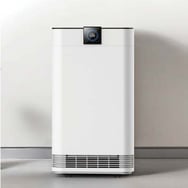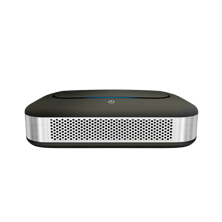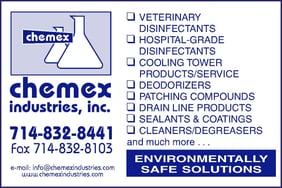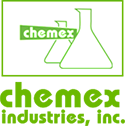Hydroxyl generating devices sanitize and disinfect air and surfaces.
Hydroxyl machines or generators have not had the recognition for disinfection, compared to other devices. Most application for hydroxyl units has been for odor control. The primary advantage has always been the safety and effectiveness of hydroxyls. Our units have been in place in kennels, shelters & veterinary hospitals because of their ability to remove the toughest odors, including skunk and pet urine. Municipal fire departments also use them for their capability in eliminating smoke odors, all while with the public workers present during renovation. Yes, smoke is one of the toughest odors to remove because its tiny micron size allows the smoke to penetrate surfaces and fabrics. Yet it is no match for hydroxyls.

Your REFRESH & BREEZE do much more than provide odor control
Putrefactive bacteria and the decomposition of food products are the cause of many malodors. If you're using your Refresh or Breeze for unpleasant odors, know that it can achieve much more. Yes. Hospitals, schools, and office buildings are utilizing our machines for both surface and air disinfection. Please read on to understand how to capture Nature's Disinfectant to protect yourself, your customers, and your employees.

The Refresh Air Sanitizer |

The Breeze Air Sanitizer |
Hydroxyls are produced in combination with sunlight (UV) to produce these sanitizing agents, known as nature’s disinfectant. They are referred to as Reactive Oxygen Species (ROS), a collective term that includes hydroxyls (OH), peroxyl (RO2), and hydroperoxyl (HO2) that are formed in nature in the lower atmosphere (stratosphere). The process of photolytic decomposition of ozone by UV radiation, yields concentrations of about one to ten million molecules per cubic centimeter outdoors. The natural existence of ROSs outdoors means that plants, animals, and humans are consistently exposed to ROSs at these concentrations and are biologically equipped to be exposed to them. e.g., “nature’s disinfectant”.
These ROSs are highly radical and will quickly attach to and inactivate pathogens or naturally break apart, reverting to normal oxygen. The radicalized particles that do attach to pathogens, disrupt their chemical bodies, changing their chemical structure. This results in changes to DNA and RNA strands and the inactivation of these pathogens. This covalent bond can also occur with mold, bacteria, allergens, volatile organic compounds (VOCs), and many other unwanted particles, inactivating them.
How our Product Works:
ClearZone’s proprietary HydroClear Technology uses light waves and a catalytic process to produce reactive oxygen species that destroy contaminants. Our products use concepts developed by NASA for use in the International Space Station (NASA) while adding catalysts to increase the output of ROSs and decrease the time necessary to create them.
Photocatalytic Oxidation
The Photocatalytic Oxidation (PCO) process combines UVC irradiation with a substance (catalyst), which results in a reaction that changes malignant contaminants into water, carbon dioxide, and detritus.
In The ClearZone uses non-ozone emitting UV light to react with oxygen, ambient hydrogen, and a catalyst to create ROSs continually. UV light breaks apart oxygen and water molecules that are actively pulled into our products, creating ions that then attach to pathogens and VOCs.
There is overwhelming scholarly research that proves the efficacy of ROSs at killing spores, mold, bacteria, and viruses, including resistant strains. ROS-generating products are approved Medical Devices by the FDA and are proven to kill COVID-19 and are effective at eliminating VOCs.

